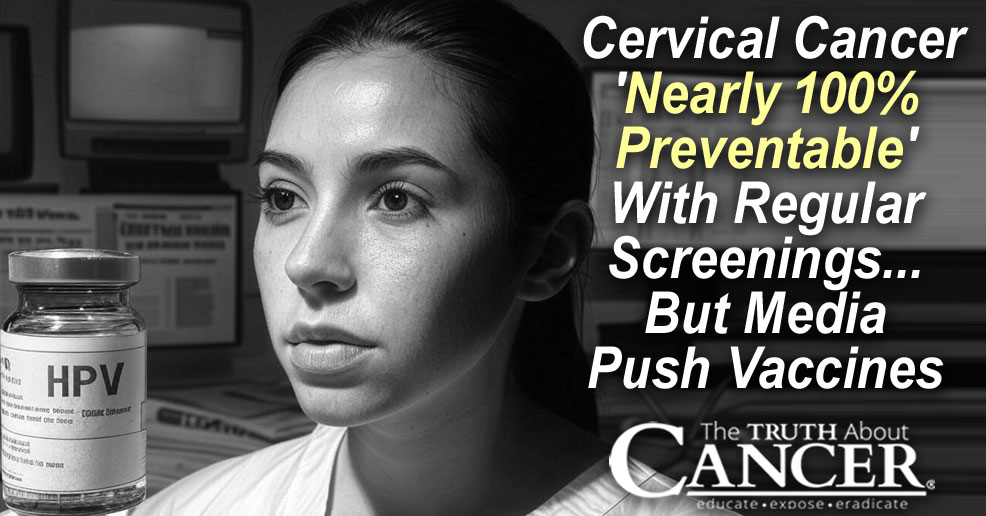Originally published on THE DEFENDER
Fewer women are getting routine screenings for cervical cancer, according to recent studies. Some researchers and media outlets suggest vaccination is the best way to prevent cervical cancer.
But experts like Dr. Sin Hang Lee, a pathologist and expert in molecular diagnostics, told The Defender that while infection with certain strains of HPV is one of the strongest known risk factors for cervical cancer, “the most important risk factor for developing cervical cancer, at least from the point of view of what we can do about it now, is the failure to receive regular screening with a Pap smear.”
“Cervical cancer is nearly 100% preventable,” Lee said.
The percentage of women screened for cervical cancer fell from 47% in 2019 to 41% in 2023, according to a research letter published last month in the Journal of the American Medical Association (JAMA).
The study, by Jessica Star and a team of researchers from the American Cancer Society, also reported that early-stage diagnoses for cervical cancer — typically identified by screening — have continued to decline.
In its report on the JAMA study, NBC News suggested that late diagnosis of cervical cancer has increased since 2012, indicating that more cancers are being missed early on and turning up later.
The JAMA study examined how cancer screening rates have changed since the COVID-19 pandemic. The researchers compared screening trends for cervical, breast and colorectal cancers from 2019 through 2023. The study found that screening rates for breast cancer and colorectal cancer had increased 7% and 12%, respectively, and had rebounded since drops in 2020.
However, it found that cervical cancer screening rates were down in 2023, remaining 14% below 2019 estimates and unchanged since 2021.
Screening rates for all cancers were higher among the college-educated. Separate research indicates that women in their 20s are least likely to be up-to-date on screenings.
The study was published two days after another analysis of human papillomavirus (HPV) screenings published in JAMA Network Open, which found that women who live in rural areas are 25% more likely to be diagnosed and 42% more likely to die from cervical cancer than women who live in urban areas.
The researchers said this is likely due to lower screening rates in rural areas. “If unaddressed, lower human papillomavirus vaccine uptake in rural may contribute to further widening disparities in the future,” the authors of the second study concluded.
NBC News mistakenly conflated the two JAMA studies and suggested the findings indicate that more people ought to be vaccinated against HPV.
Lee said he thought the purpose of the JAMA papers was to scare people into worrying that cervical cancer would increase in the post-pandemic era.
Lee, who is director of Milford Molecular Diagnostics Laboratory, said the papers cited by Star et al. show that cervical cancer screening rates were dropping long before 2019, and may have continued to drop regardless of the pandemic.
“Of course, the mainstream media are using any opportunity to promote HPV vaccines. But the facts are the following,” he said:
“The incidence rate of cervical cancer in the United States was about 44 per 100,000 women in 1947. However, since the widespread use of annual Pap smear screening for detection followed by treatment of these precancerous lesions, the incidence rate of cervical cancer already dropped to 8.8 per 100,000 in 1970. This rate continued to decrease thereafter.”
This, he said, was according to testimony by Dr. Nancy C. Lee, the former associate director for science within the Division of Cancer Prevention Control of the National Centers for Chronic Disease Prevention and Health Promotion, Centers for Disease Control and Prevention (CDC). Nancy Lee presented the testimony before the U.S. House Committee on Commerce, Subcommittee on Health and Environment on March 16, 1999.
Sin Hang Lee noted that Nancy Lee’s testimony confirmed that screening lowered cervical cancer rates long before any HPV vaccines were marketed.
According to Sin Hang Lee, cervical cancer occurs at an average age of 54. However, cervical intraepithelial neoplasia (or CIN), the precursor lesion to cervical cancer, most often occurs in much younger women.
“For a woman with CIN, her likelihood of survival is almost 100% with timely and appropriate treatment,” he said. The fact that CIN occurs at a younger age indicates that it usually takes a substantial amount of time for cervical cancer to develop.
“This means that screening younger women is an important strategy that actually prevents cervical cancer from ever developing. Furthermore, when cervical cancer is detected at its earliest stage, the five-year survival rate is more than 90%.”
Yet, rather than advocating for screening, mainstream outlets like NBC continue to promote the HPV vaccine as the solution to the problem of cervical cancer.



















Leave a Reply